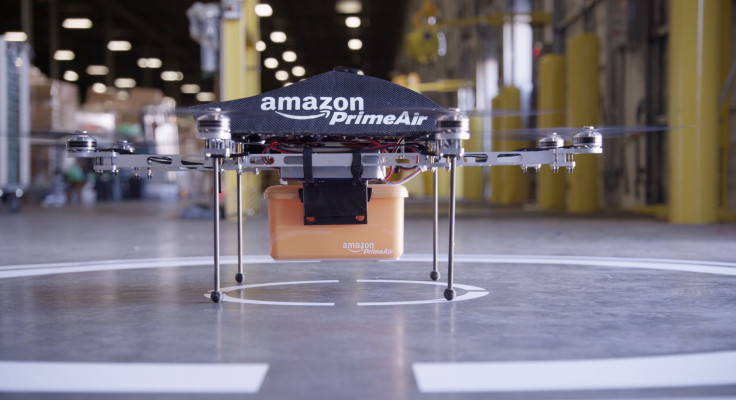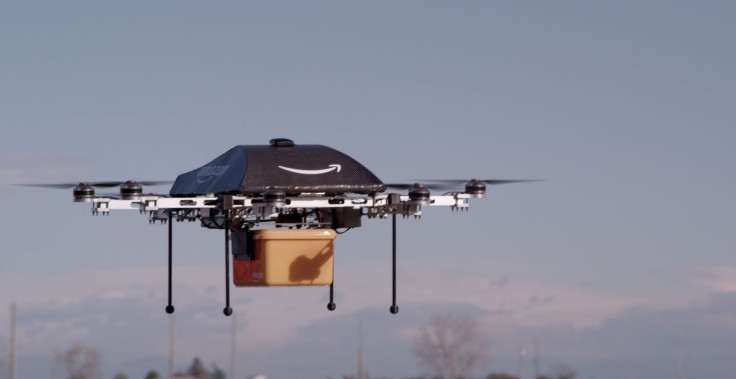Amazon Working On Drone-Based Delivery Service: Aerial Vehicles Known As 'Octocopters' Expected To Deliver Packages In 30 Minutes

In a few years from now, if you see a small drone hovering outside your house, relax. All it could mean is that Amazon (NASDAQ:AMZN) is delivering a product you ordered a half hour ago on the company's website.
The retail giant is working on delivering packages using drones, Jeff Bezos, Amazon’s founder and CEO, revealed on CBS's “60 Minutes” show on Sunday, elaborating that the company is testing a drone-based delivery service called Prime Air, which is expected to deliver packages in only 30 minutes after customers click “Buy” on the company’s online store.
“I think, I, I am, I’m an optimist Charlie,” Bezos told Charlie Rose during the show. “I know it can’t be before 2015, because that’s the earliest we could get the rules from the FAA. My guess is that’s, that’s probably a little optimistic. But could it be, you know, four, five years? I think so. It will work, and it will happen, and it’s gonna be a lot of fun.”
According to Bezos, the delivery drones will be able to carry items weighing up to five pounds. Those items will cover 86 percent of what Amazon currently delivers, and will be flown from the company’s 96 massive warehouses, known as “fulfillment centers,” spread around the country.

“These generations of vehicles, it could be a 10-mile radius from a fulfillment center. So, in urban areas, you could actually cover very significant portions of the population,” Bezos said.
Amazon said in a post on its website that the company’s R&D department is currently honing the Prime Air project, while the Federal Aviation Administration is also working on rules for unmanned aerial vehicles.
“The FAA would not let Amazon do this now,” Ryan Calo, an expert on robotics at the University of Washington, told USA Today. “But this is precisely the type of application that Congress had in mind when it told the FAA in 2012 to come up with rules for commercial unmanned aircraft.”
According to Calo, even if Amazon is allowed to use drones for its deliveries, it will need clear-cut plans for safety before letting the aerial vehicles fly, and according to Amazon, the company already has safety measures at the top of its to-do list.
“Safety will be our top priority, and our vehicles will be built with multiple redundancies and designed to commercial aviation standards,” the company said.
Here is a video that shows how the drones, also known as “octocopters,” will pick up packages at the company’s fulfillment centers and fly around to deliver them to customers.
© Copyright IBTimes 2024. All rights reserved.





















